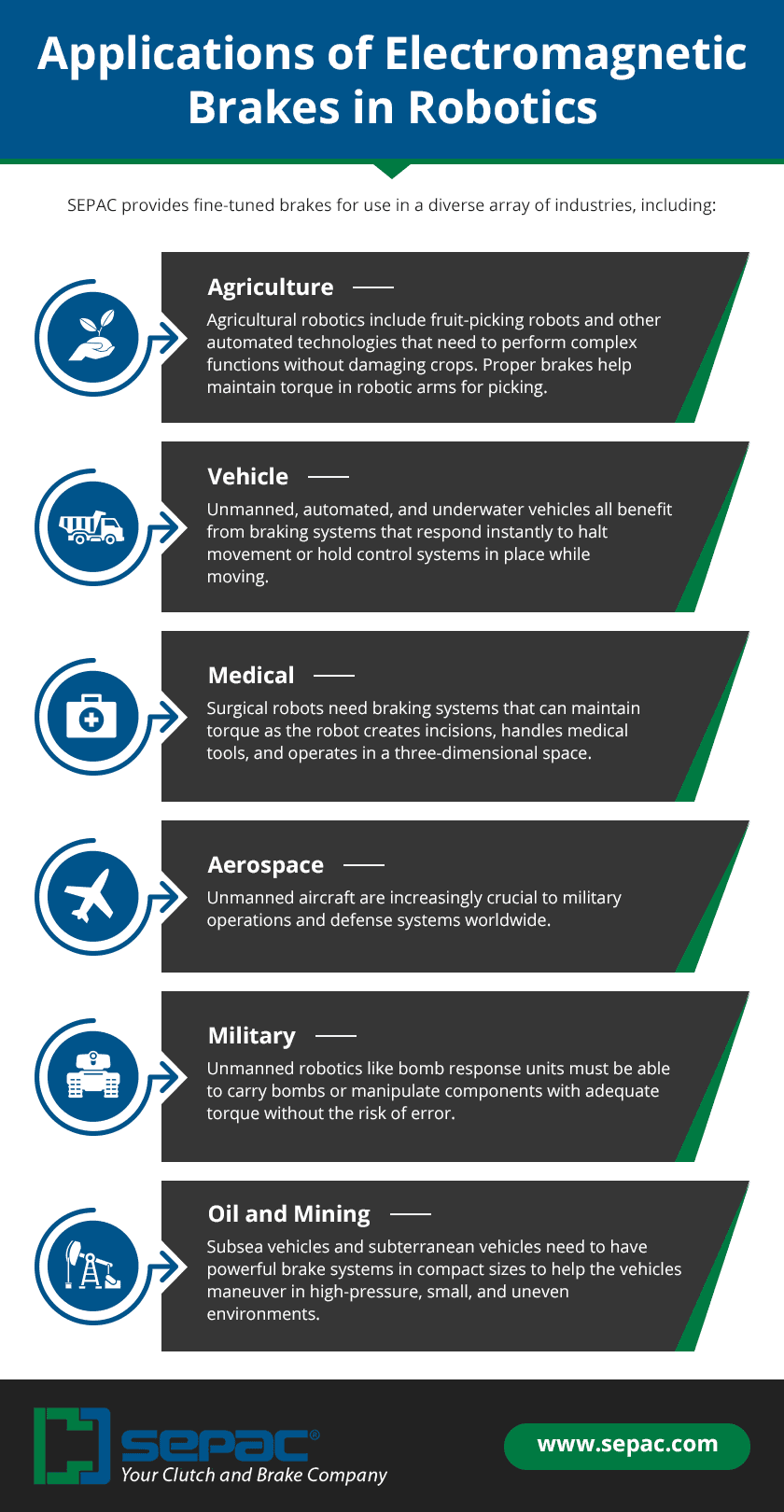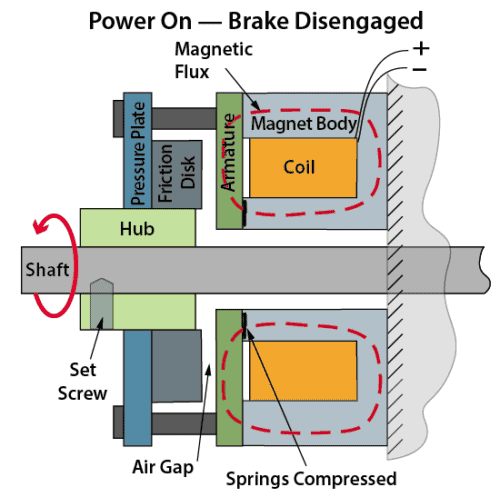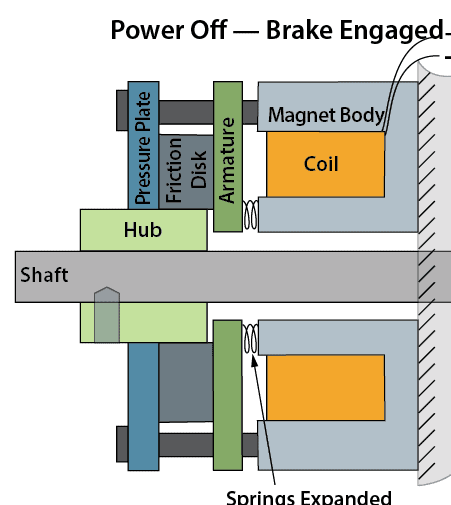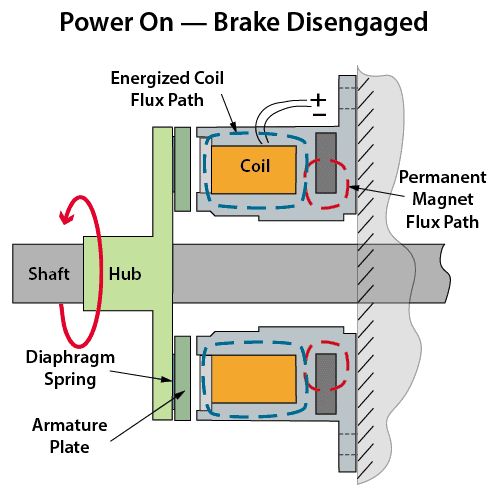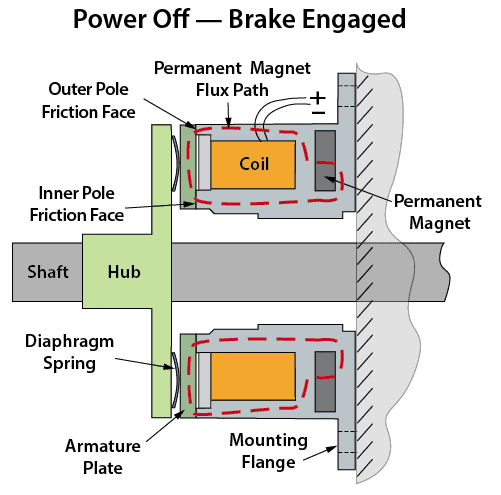Robotics play an important role in a wide range of industries, and they require high-performance brakes to ensure safe and effective operation. Although robotics systems have safety measures in place, brakes grant the added ability to apply intentional torque and increase safety by offering emergency stop or hold features. At SEPAC, we specialize in creating reliable braking systems for industries such as aerospace, medical, oil and gas, agriculture, military, and more. Our high-performance brake solutions are suitable for a wide range of robotic applications, including:
- Assembly
- Pick and place
- Packaging
- Unmanned aerial vehicles (UAVs)
- Remotely operated vehicles (ROVs)
- Automated guided vehicles (AGVs)
- Autonomous underwater vehicles (AUVs)
- Material handling
- Robotic surgery
- Inspection
- Intelligence/surveillance/reconnaissance (ISR)
Our team can help you find the right top-tier braking system for your application.
Types of Electromagnetic Brakes Found in Robotic Applications
The two main functions of brakes for robotics systems include stopping a load and holding a load. To ensure reliable performance, it is important to choose the right type of brakes for your application. Different types of brakes used in robotic applications include:
Spring-Applied Friction Brakes
Spring applied friction brakes consist of a coil, an armature, a friction disc, and a pressure plate. The magnet body is attached to the rear of the motor or bulkhead, and the hub is attached to the shaft with set screws. When the coil is energized, the electromagnetic field attracts the armature plate and compresses the springs. This allows the friction plate to rotate freely with the hub and the shaft. When power is turned off, the electromagnetic field dissipates, allowing the springs to push the armature plate into contact with the friction disc. This squeezes the friction disc between the pressure plate and the armature plate, thus transmitting torque, and stopping/holding the friction disc, hub, and shaft.
Spring applied friction brakes are a cost-effective option that provide good general performance for a diverse range of applications, making them a popular choice for many robotics systems.
Permanent Magnet Friction Brake
Permanent magnet friction brakes consist of a permanent magnet, armature plate, coil, and hub. With the current off to the electric coil, the permanent magnet provides ongoing magnetic flux to engage the armature plate with the brake’s inner and outer friction faces. The load attached to the hub/diaphragm spring/armature plate assembly is held continuously without power consumption. When current is applied to the coil, the permanent magnet flux path is counteracted, thereby reducing the magnetic force at the friction face contact points to zero. This allows the diaphragm spring to pull the armature plate away from the magnet body, allowing the load to rotate freely – only while power is applied to the coil.
Permanent magnet friction brakes offer zero-backlash, making them ideal for high-precision and high-accuracy applications such as semiconductor or medical device manufacturing.
Spring-Applied Tooth Brakes
Spring-applied tooth brakes consist of a coil, a toothed output plate (which is attached to the shaft hub), and a toothed armature. When current is applied to the coil in the magnet body, a magnetic field is created which attracts the armature toward the magnet body, disengaging the teeth, and allowing the load attached to the output plate to rotate freely. When current is removed, springs push the armature teeth into engagement with the output plate teeth and the load is held. Tooth profiles can be modified based on the performance needs of your application.
Spring-applied tooth brakes offer excellent torque-to-size ratios; however, they cannot allow for dynamic engagement.
Applications of Electromagnetic Brakes in Robotics by Industry
SEPAC provides fine-tuned brakes for use in a diverse array of industries, including:
- Agriculture. Agricultural robotics include fruit-picking robots and other automated technologies that need to perform complex functions without damaging crops. Proper brakes help maintain torque in robotic arms for picking.
- Vehicle. Unmanned, automated, and underwater vehicles all benefit from braking systems that respond instantly to halt movement or hold control systems in place while moving.
- Medical. Surgical robots need braking systems that can maintain torque as the robot creates incisions, handles medical tools, and operates in a three-dimensional space.
- Aerospace. Unmanned aircraft are increasingly crucial to military operations and defense systems worldwide.
- Military. Unmanned robotics like bomb response units must be able to carry bombs or manipulate components with adequate torque without the risk of error.
- Oil and Mining. Subsea vehicles and subterranean vehicles need to have powerful brake systems in compact sizes to help the vehicles maneuver in high-pressure, small, and uneven environments.
Robotics Brakes From SEPAC
Robotics brakes are crucial for halting moving and applying holding torque in a variety of critical applications. At SEPAC, we specialize in creating high-quality braking solutions for your robotics systems to ensure safe and effective performance. To learn more about how our brakes can be used in your robotics system, download our Robotics Application eBook today.
